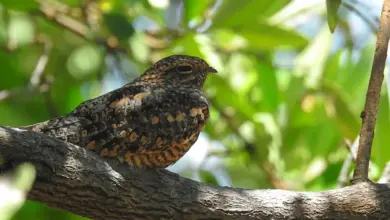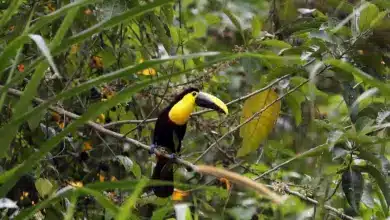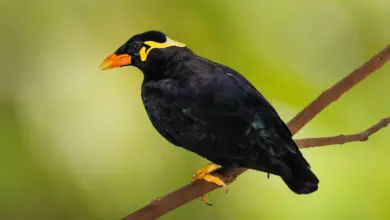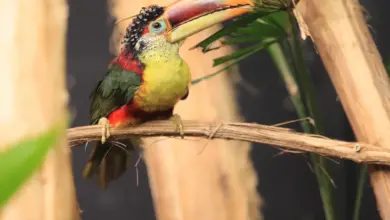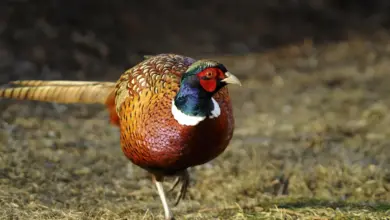The Genus Selenidera contains six tropical South American species of toucanets – one ranging south into Central America. They inhabit lowland rainforests below 1500m. These elusive toucans tend to forage alone or in pairs and generally keep to dense cover. The Selenidera toucanets are largely sedentary.
They are fairly long-lived with a lifespan around 20 years.
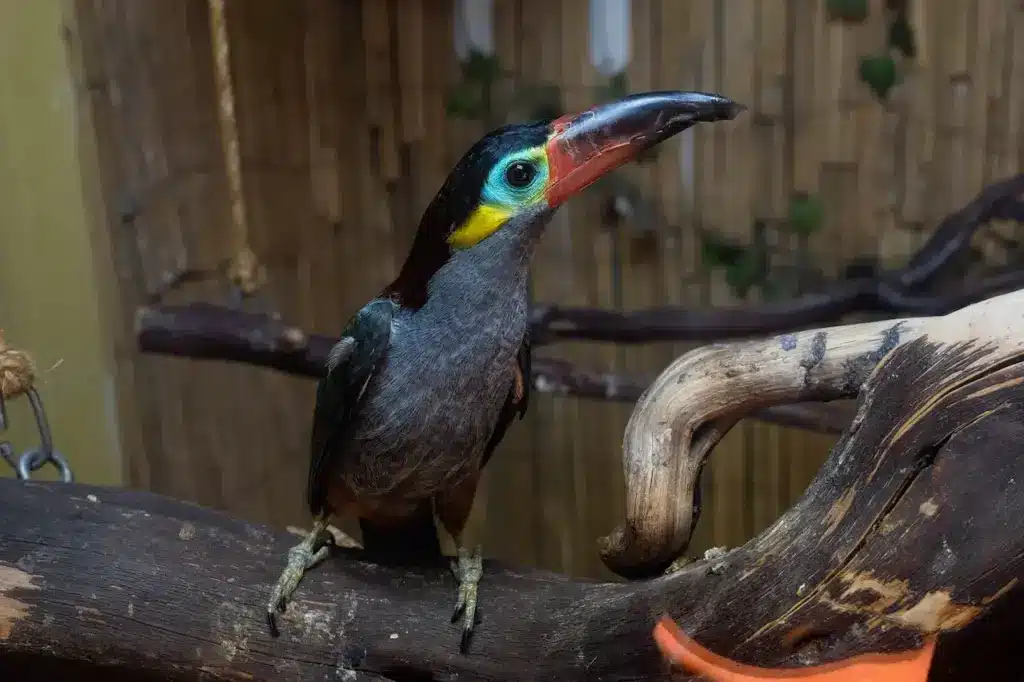
Species
- Guianan Toucanet, Selenidera culik
- Tawny-tufted Toucanet, Selenidera nattereri
- Golden-collared Toucanet, Selenidera reinwardtii
- Langsdorff’s Toucanet or Green-billed Toucanet, Selenidera (reinwardtii) langsdorffii
- Gould’s Toucanet, Selenidera gouldii
- Spot-billed Toucanet, Selenidera maculirostris
- Yellow-eared Toucanet, Selenidera spectabilis
Description
These are mostly small toucans with a total length of 30-35 cm (12-14 in). The exception is the Yellow-eared Toucanet which has a total length of approx. 38 cm (15 in).
These toucanets have a green upper plumage, red undertail feathers and bare blue eye rings.
Unlike most other toucans, males and females can be visually identified. The males have a black crown (top of the head), nape (lower neck at the back), throat and chest. They have an orange / yellow streak across the ears.
The females of most species have those areas that are black in the male replaced by a rich brown. They lack the streak across the ear that can be seen in the male.
Exceptions are as follows:
The female Guianan Toucanet, has a grey under plumage and a rufous collar at the nape.
The female Yellow-eared Toucanet looks like the male of this species, except for her brown crown and lack of an ear streak.
Breeding / Nesting
The mating ritual is a fun-loving affair for toucans, as they throw fruit to one another.
Like all of their other activities, nesting happens high up in hollow areas in trees. The bill is not effective for digging or any other type of extensive excavation work and so they must rely on holes already formed by other means.
The nests are not lined, but the two to four shiny white eggs that are laid each year rest on a few wood chips created while enlarging the opening or on various kinds of regurgitated seeds collected for this purpose. Parents share equally in incubation duties, but rarely sit on the nest for more than an hour at a time and the eggs are often left uncovered. Both parents share in feeding fruit to the babies for up to 8 weeks
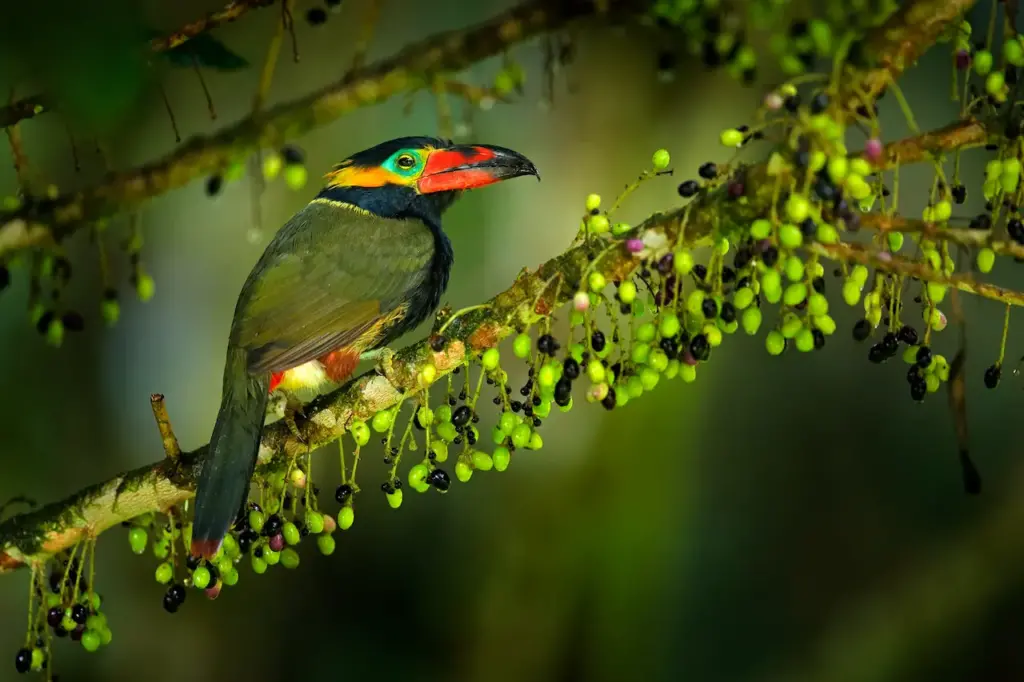
After 16 days the nestlings are born blind, with no trace of down on their pink skin. The bill is unremarkable until about 16 days old when it takes on the distinguishing features of the toucan, and requires up to four months to develop fully. Feathers begin to expand at 4 weeks.
Babies have pads on their elbows that protect their feet by keeping them elevated until they fledge.
Breeding in captivity requires attention to a number of details. Even successful breeders report rates as low as 30% for the incubation of eggs.
Calls / Vocalizations
They are generally quiet. Their calls are low-pitched and croaking.
